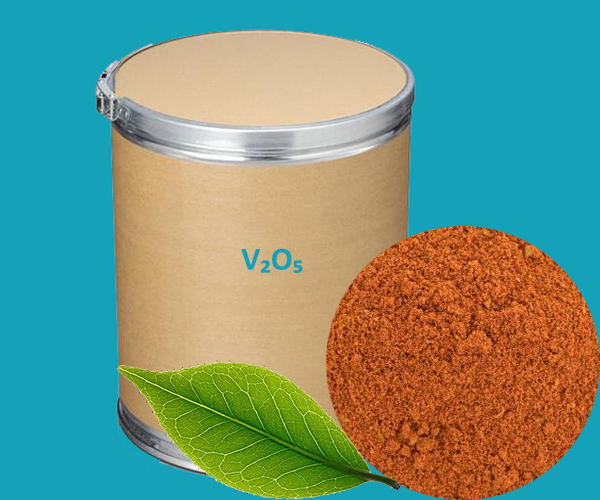Vanadium pentoxide or vanadium(V) oxide, also known as vanadia, is the chemical compound with the formula V₂O₅. This orange solid is the most important compound of vanadium. Upon heating it reversibly loses oxygen. Related to this ability, V₂O₅ catalyses several useful aerobic oxidation reactions, the largest scale of which underpins the production of sulfuric acid from sulfur dioxide. It is a poisonous orange solid which, because of its high oxidation state, is both an amphoteric oxide and an oxidising agent. Unlike most metal oxides, it dissolves slightly in water to give a pale yellow, acidic solution.
Properties of Vanadium Pentoxide
Chemical formula : V₂O₅
Molar mass : 181.88 g/mol
Appearance : Orange-yellow solid
Density : 3.357 g/cm³
Melting point : 690 °C (963 K)
Boiling point : 1750 °C decomp.
Solubility in water : 0.8 g/100 mL (20 °C)
Uses of Vanadium Pentoxide
The major use for vanadium(V) oxide is in the production of ferrovanadium. Aonther important use of vanadium(V) oxide is in the manufacture of sulfuric acid.
Due to its high thermal coefficient of resistance, vanadium(V) oxide finds use as a detector material in bolometers and microbolometer arrays for thermal imaging. It also find an application as ethanol sensor in ppm levels (up to 0.1 ppm).
Possible new uses include the preparation of bismuth vanadate ceramics for use in solid oxide fuel cells.Another new application is in vanadium redox batteries, a type of flow battery used for energy storage, including large power facilities such as wind farms.
 English
English Español
Español Português
Português Français
Français Deutsch
Deutsch Русский
Русский 中文
中文 日本語
日本語
